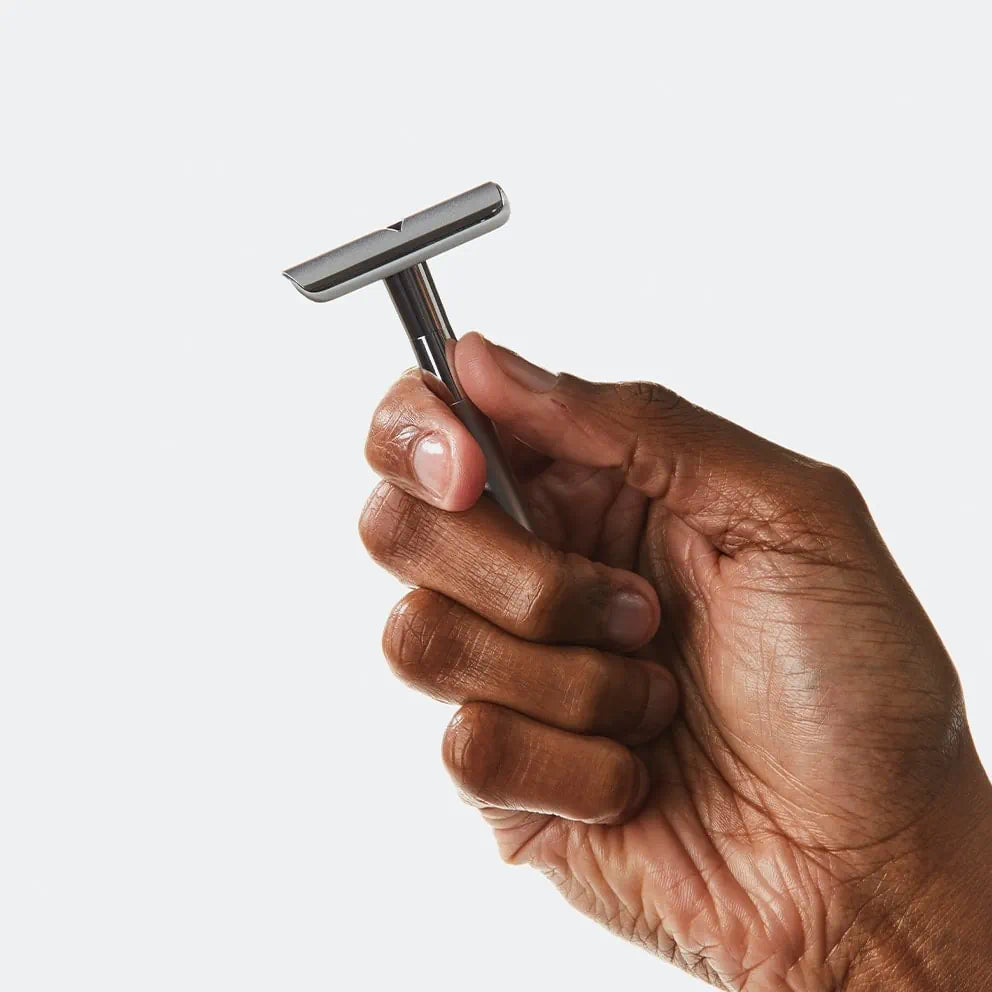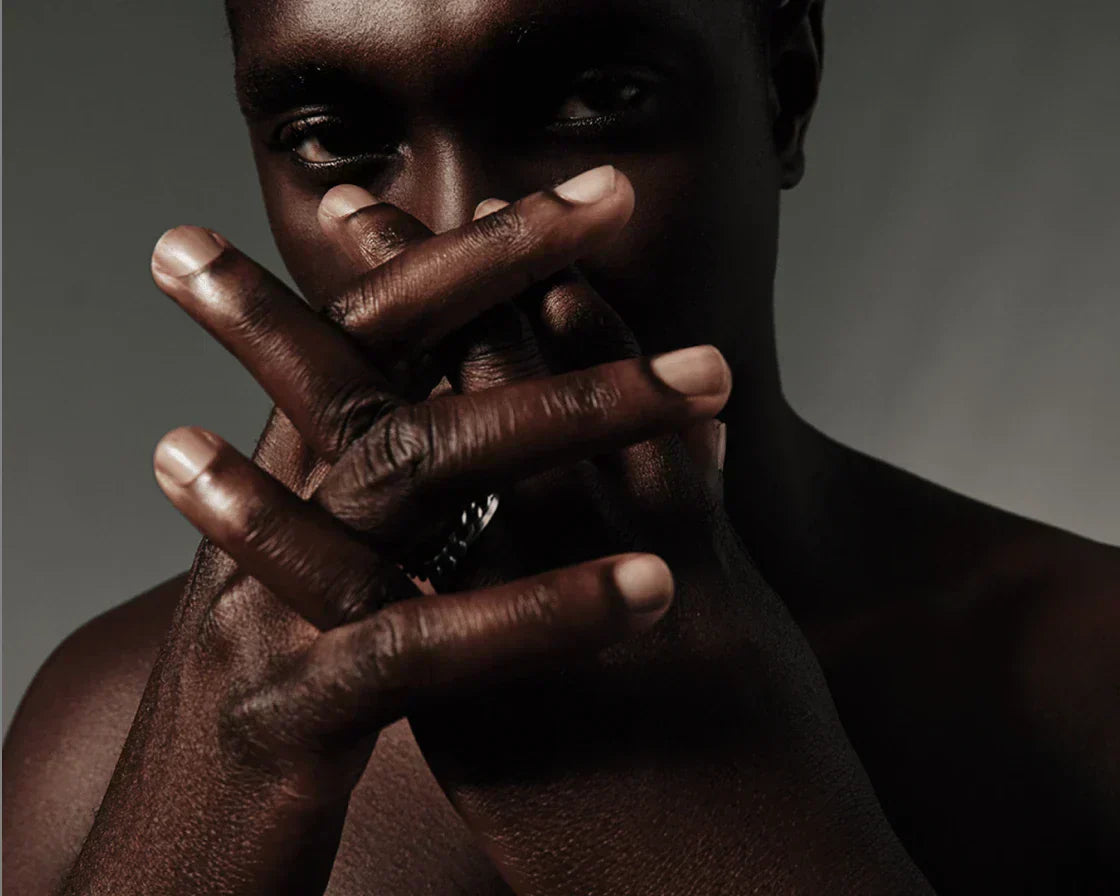
Many men suffer from both acne and razor bumps, and sometimes it’s difficult to tell the two apart. Both razor bumps and pimples can appear as angry-looking red bumps on the cheeks, neck, and around the mouth. Many men suffer a great deal of embarrassment as a result of these facial blemishes, so it’s important to know how to identify each condition correctly and administer effective treatment.
DIFFERENCES BETWEEN RAZOR AND ACNE
Razor bumps can look a lot like acne, but the causes are actually very different. Razor bumps form when facial hair gets trapped under the skin and starts growing inward. This is usually caused by shaving, which cuts off the hair below the skin’s surface which likely will become ingrowns. Acne, in contrast, occurs when pores become blocked with natural skin sebum.
TELLING THE DIFFERENCE BETWEEN ACNE AND RAZOR BUMPS
Two of the most easily recognizable types of acne are whiteheads and blackheads. In both cases, the white or blackhead of the pimple is actually sebum trapped in the pore. With whiteheads, the sebum is trapped under the skin, but blackheads are open to the skin surface, so the sebum oxidizes and turns black.
THE MOST EFFECTIVE TREATMENTS FOR RAZOR BUMPS AND ACNE CONTAIN ESSENTIAL OILS, WHICH ARE DEEPLY NOURISHING FOR THE SKIN, AS WELL AS BEING NATURAL ANTIBACTERIAL INGREDIENTS.
The difficulty comes when acne pimples become inflamed, as they can then look very similar to the small red swellings known as razor bumps. If in doubt, stop shaving for a few days to see whether this stops new bumps from appearing. If you keep getting just as many pimples, your problem is probably acne. If the problem goes away when you stop shaving, it is likely that you are suffering from razor bumps – and you might want to consider changing your shaving technique so that you can enjoy the smooth feeling of a clean-shaven face without worrying about razor bumps.

SIMILARITIES BETWEEN RAZOR BUMPS AND ACNE
Despite their differences, razor bumps and acne have some similarities in how they are treated. Both acne and razor bumps can become infected with bacteria. Your immune system responds to these bacteria by causing swelling to occur around the blocked pore. Although this inflammation is a natural response to bacteria invading the body, it can be very noticeable.
TREATING RAZOR BUMPS AND ACNE
Treatments for acne and razor bumps both focus on discouraging the growth of bacteria and tying in soothing ingredients to bring down swelling and reduce redness. The most effective treatments for razor bumps and acne contain essential oils, which are deeply nourishing for the skin, as well as being natural antibacterial ingredients.
TIPS FOR TREATING RAZOR BUMPS
The most obvious solution to razor bumps is to stop shaving, but growing a full beard that actually connects simply isn’t an option for all men. It might be time to make a few changes to your shaving routine to reduce the risk of razor bumps recurring.
Always start by opening up the pores by washing your face with warm water. Next, use a pre-shave oil to soften the beard and lubricate your face so that the razor can glide over your skin without irritation. Shaving with a quality single-blade safety razor can also help reduce razor bumps and irritation that’s caused by the multiple blades of a modern cartridge razor. Follow your shave, with an after-shave lotion to instantly soothe the skin, discourage bacterial growth, and restore essential moisture to your skin.
Because standard acne treatments contain antibacterial ingredients, you might find that they help in reducing razor bump inflammation. Take note that many acne treatments can dry out the skin. A product that’s designed to prevent and treat razor bumps can fix this common problem while caring for your skin.
PRODUCTS DESIGNED TO TREAT RAZOR BUMPS SHOULD CONTAIN THESE KEY INGREDIENTS:
- Tea Tree Oil A natural antiseptic that helps reduce the risk of razor bumps becoming infected.
- Witch Hazel To help reduce swelling and inflammation.
- Lactic Acid Helps remove dead cells to reduce instances of scars and hyperpigmentation.
- Salicylic Acid Helps reduce instances of scarring and hyperpigmentation.
- Vitamin E An essential vitamin that helps promote skin’s health and the ability to heal.

